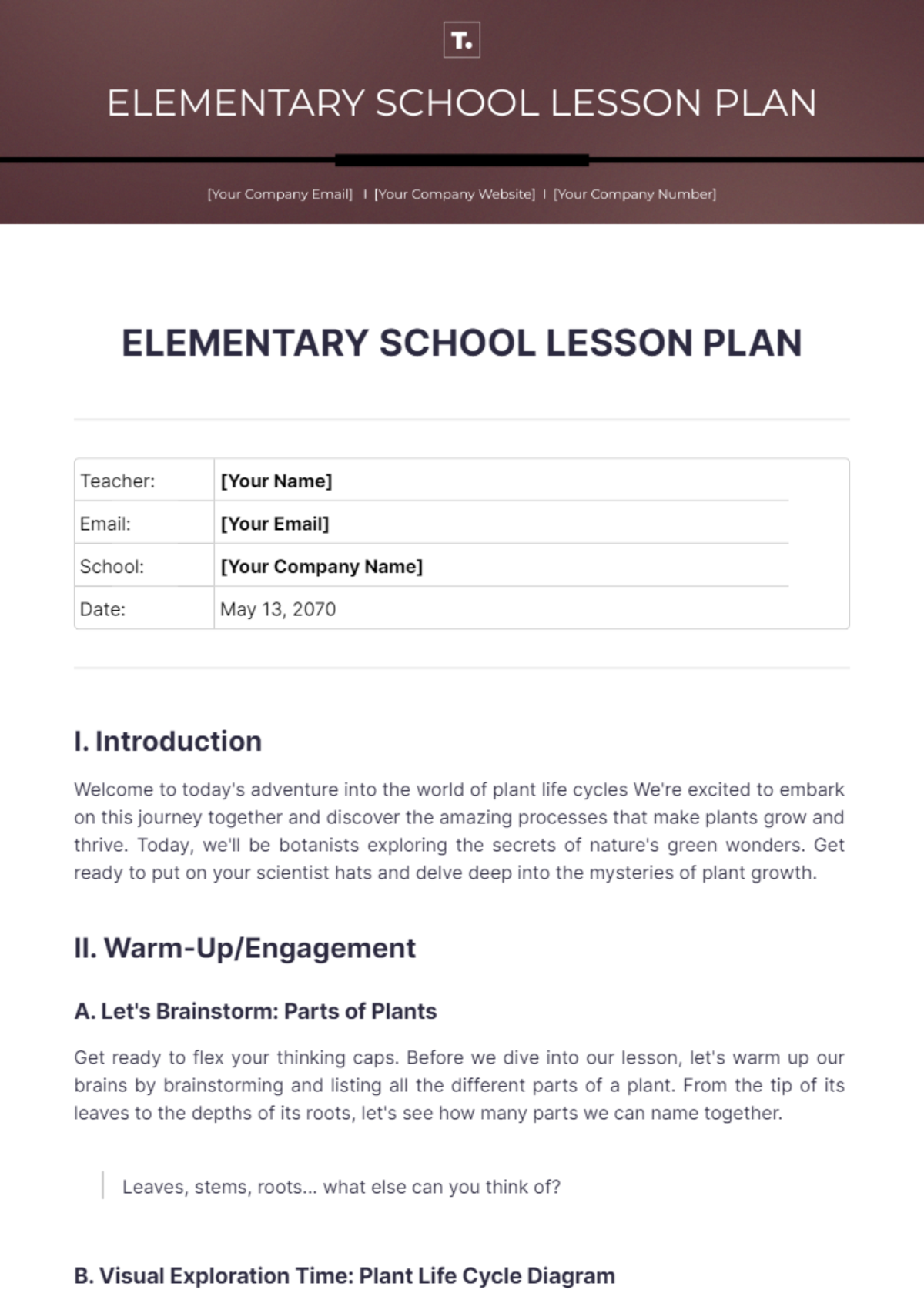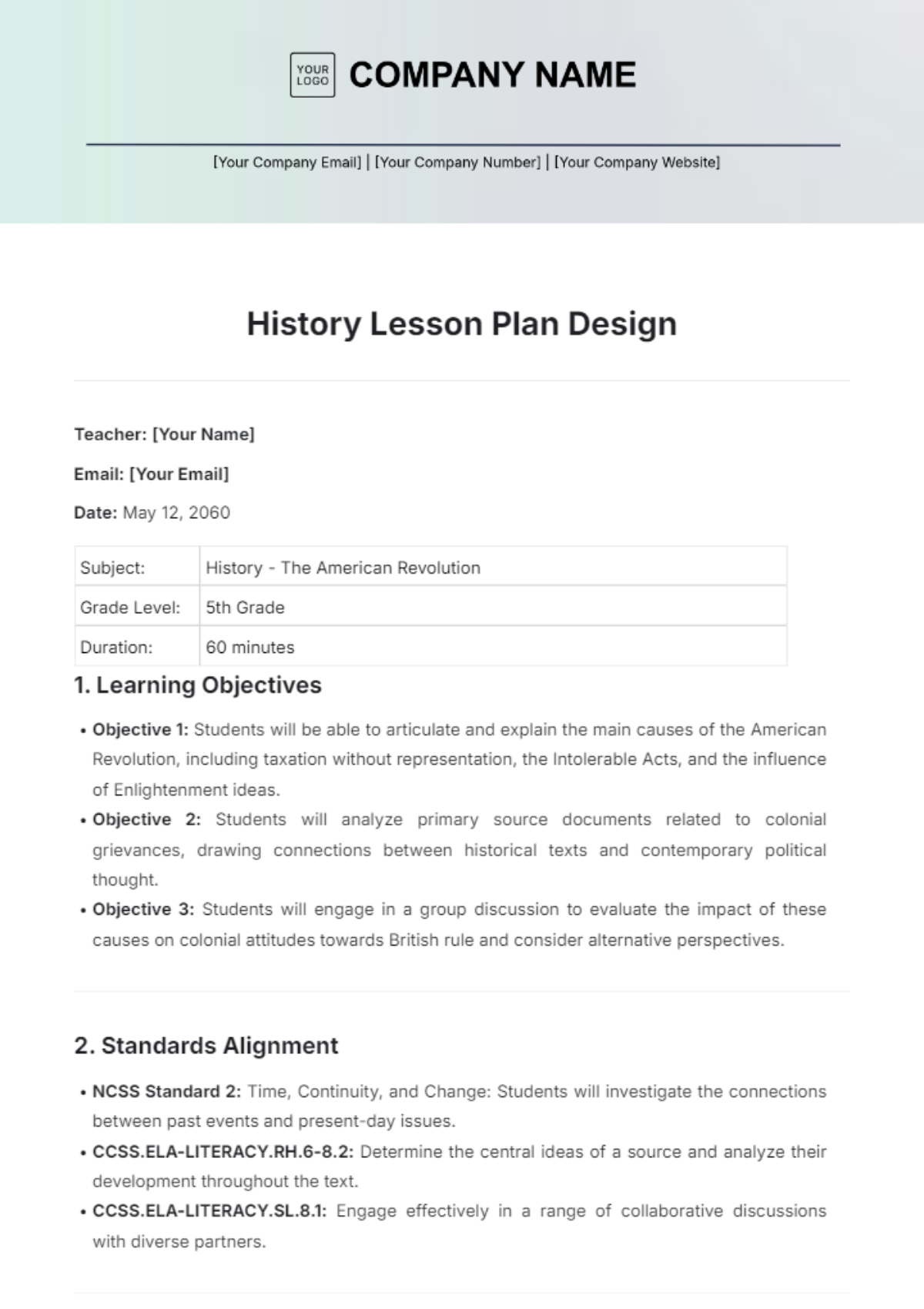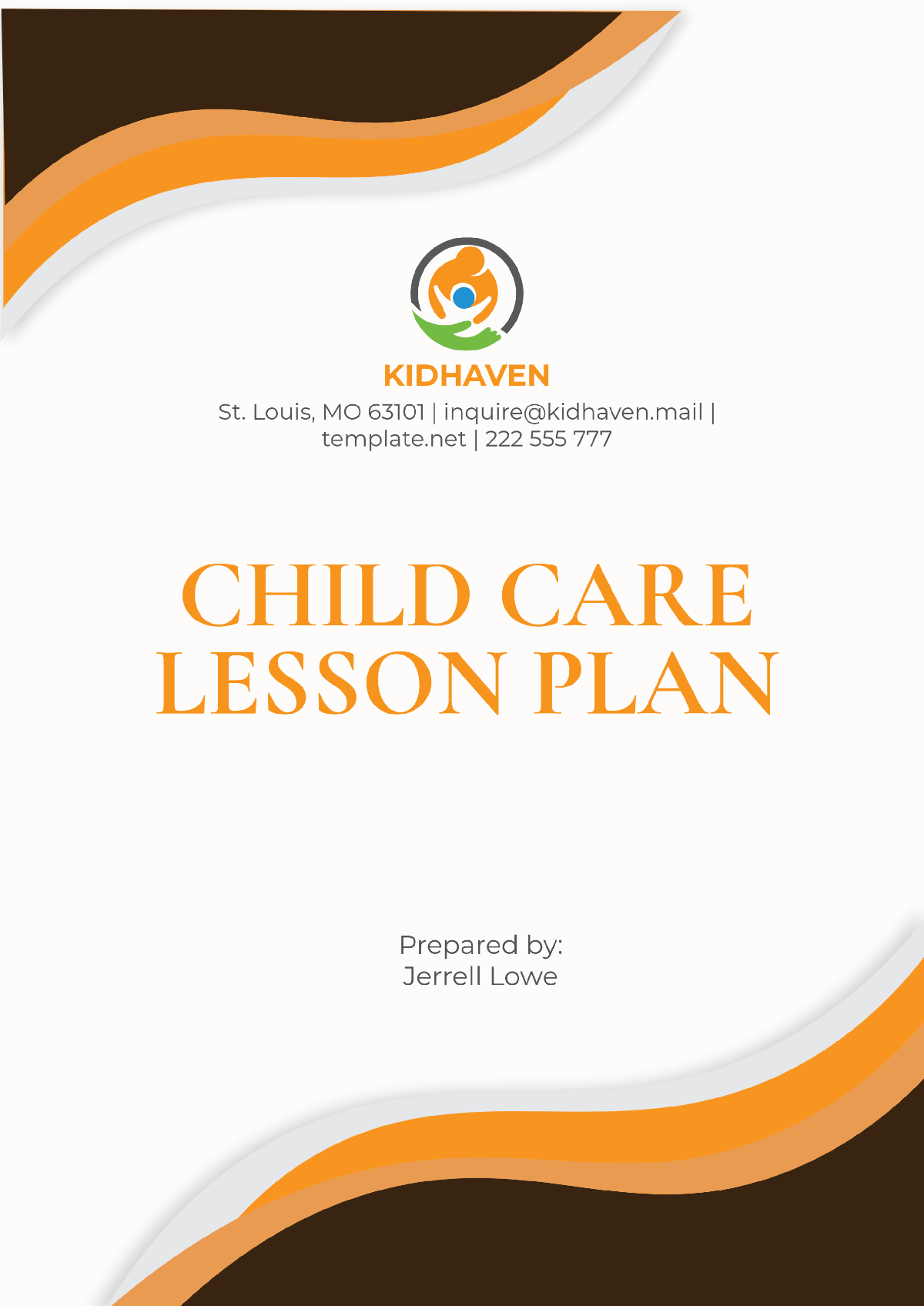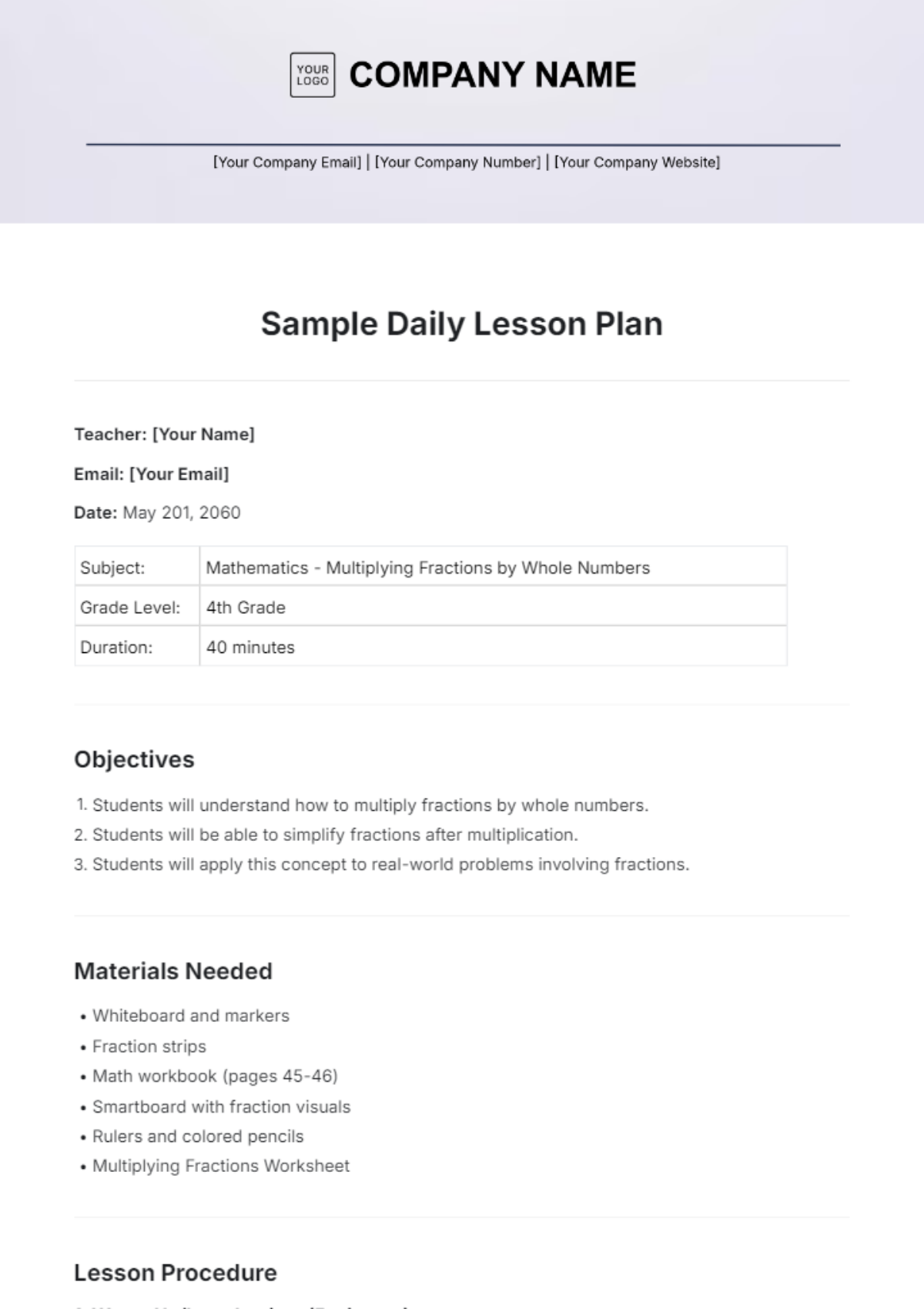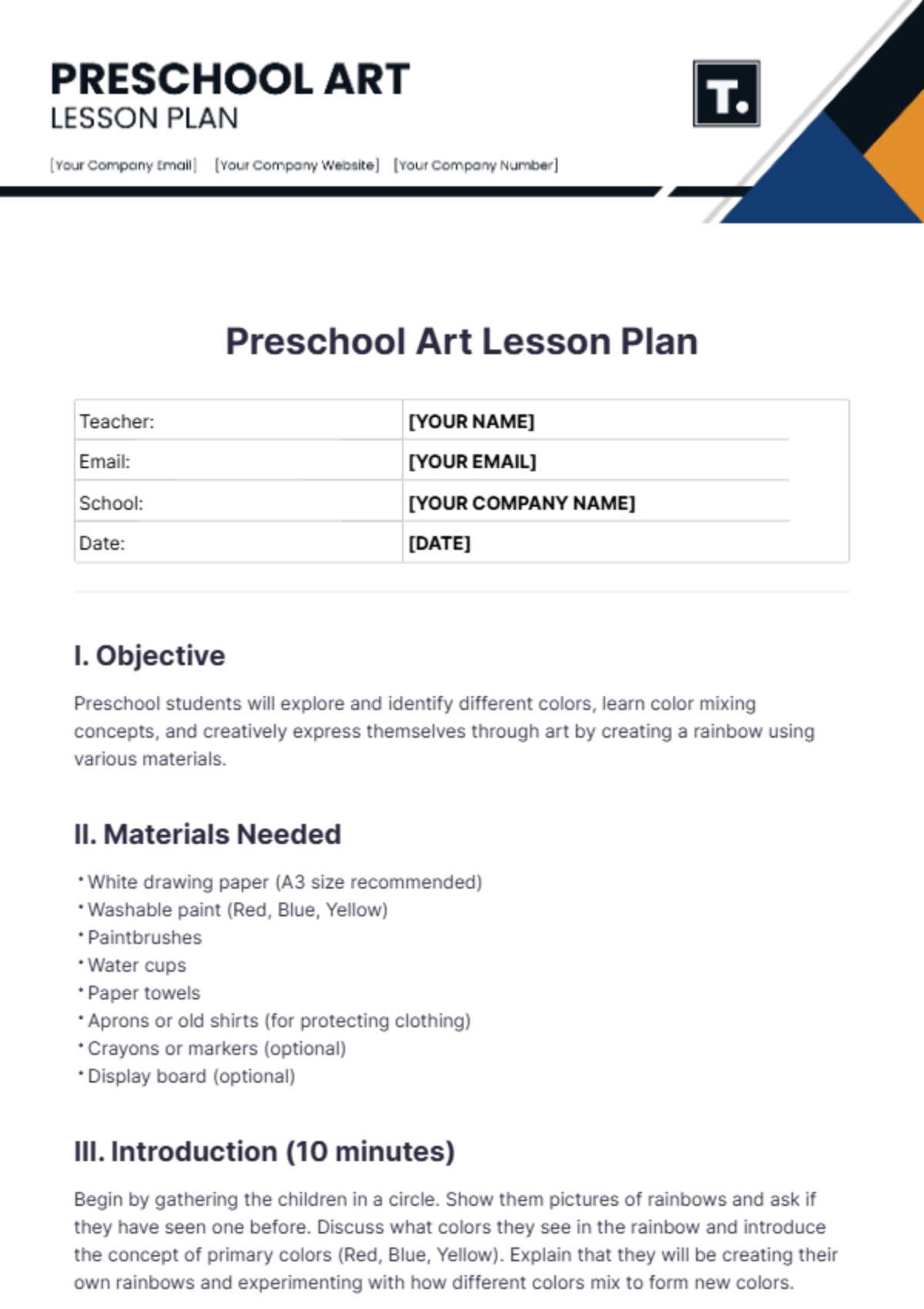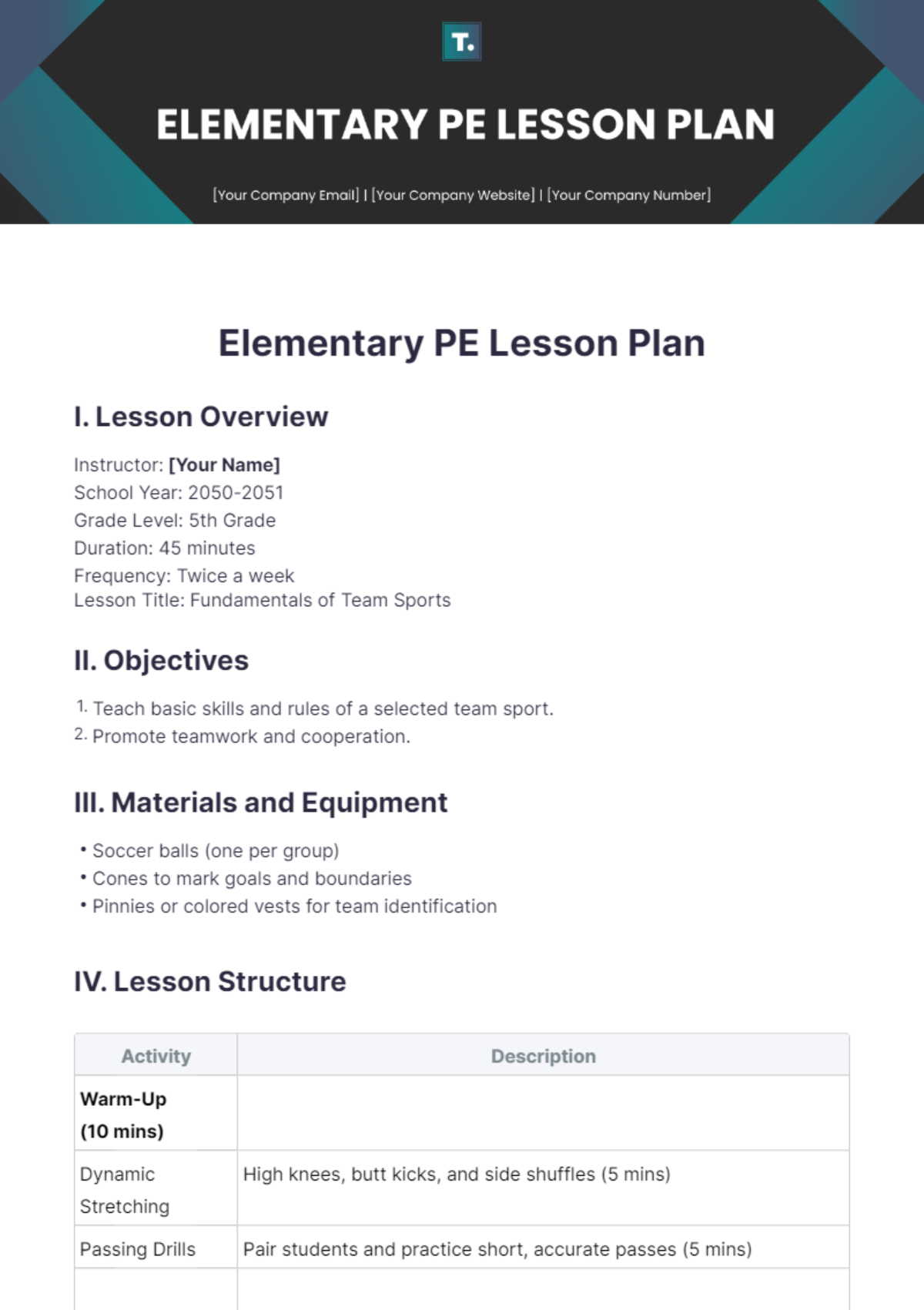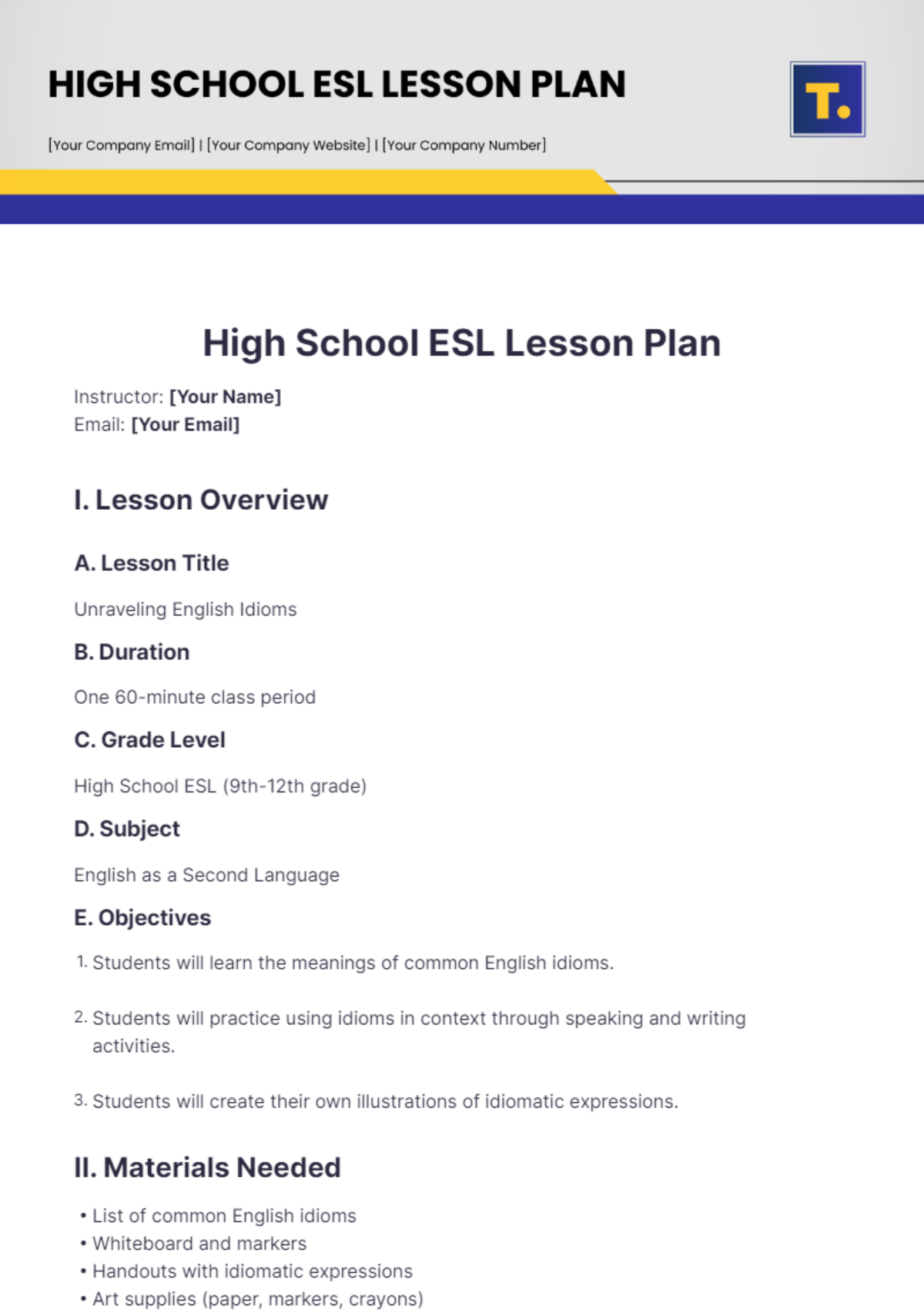Detailed Lesson Plan
Teacher: [Your Name]
Email: [Your Email]
Date: May 22, 2060
Subject: | Mathematics - Introduction to Fractions |
Grade Level: | 5th Grade |
Duration: | 60 minutes |
I. Objectives
General Objective:
Students will understand the concept of fractions as parts of a whole and will be able to identify, represent, and compare fractions visually and numerically.
Specific Objectives:
By the end of the lesson, students will be able to:
a. Define fractions and identify their components (numerator and denominator) using examples.
b. Recognize fractions in real-life contexts, such as food and time.
c. Create accurate visual representations of given fractions using diagrams and colored pencils.
d. Compare and order fractions with like denominators.
II. Materials Needed
Textbook: "Math for Everyday Life," Chapter 5 (pages 101-115)
Visual Aids:
Fraction circles and strips
Pie charts (printed handouts)
Number lines (projected on Smartboard)
Technology:
Smartboard for interactive lessons
Projector for displaying visual aids
Educational software (e.g., Fraction Manipulatives App)
Worksheets:
Fraction identification and representation worksheets (3 variations based on skill level)
Exit ticket (quick assessment sheet)
Supplies:
Colored pencils (at least 4 colors per student)
Scissors
Construction paper (various colors)
Glue sticks
III. Standards
Common Core Standards:
CCSS.MATH.CONTENT.5.NF.A.1: Explain why a fraction a/b is equivalent to a fraction (n × a)/(n × b) by using visual models.
CCSS.MATH.CONTENT.5.NF.A.2: Solve word problems involving the division of whole numbers leading to fractions.
CCSS.MATH.CONTENT.5.NF.B.3: Interpret a fraction as a division of the numerator by the denominator (a/b = a ÷ b).
IV. Lesson Procedure
Introduction (10 minutes):
Hook Activity: Show a whole pizza and ask, “If we want to share this pizza among four friends, how would we do it?” Discuss the idea of equal parts and introduce the term “fraction.”
Objective Sharing: Clearly state the lesson's objectives and explain why understanding fractions is important in daily life (e.g., cooking, sharing).
Direct Instruction (20 minutes):
Definition and Components: Define fractions, emphasizing the numerator (the number of parts we have) and the denominator (the total number of equal parts).
Use a fraction circle to show 1/2, 1/3, and 1/4.
Illustrate the concept using a pie chart, highlighting how the same circle can represent different fractions.
Real-Life Contexts: Discuss relatable examples, such as dividing a chocolate bar (e.g., "If I have a chocolate bar and I eat 1/4 of it, how much is left?").
Interactive Demonstration: Use the Smartboard to draw a number line and place fractions on it (e.g., 1/2, 3/4). Invite students to participate by placing their fractions on the line.
Guided Practice (15 minutes):
Activity: Distribute fraction worksheets featuring various shapes divided into parts. Have students identify the fractions represented and write them down (e.g., a circle divided into 8 parts with 3 shaded).
Group Discussion: Organize students into small groups of 4. Each group discusses their answers and reasoning for the fraction representations. The teacher circulates to provide support and clarify misunderstandings.
Independent Practice (10 minutes):
Individual Task: Students will create their visual representations of fractions on construction paper. They should represent at least three different fractions using colored pencils and label them accurately.
Expectations: Emphasize neatness and accurate labeling, encouraging creativity in how they represent each fraction (e.g., using drawings of fruit or other items).
Closure (5 minutes):
Summary Discussion: Recap key concepts by asking students to share one fraction they learned about today and provide a drawing example.
Exit Ticket: Hand out a quick assessment sheet where each student writes down one fraction and draws a visual representation of it. Collect these as they leave to gauge understanding.
V. Assessment
Formative Assessment:
Monitor students during group discussions and activities, noting who participates actively. Use questioning strategies (e.g., “Can someone explain how they arrived at that answer?”) to assess understanding.
Review completed worksheets to check for correct identification of fractions.
Summative Assessment:
A quiz at the end of the week covering the following:
Definitions of fractions
Identification of fractions in visuals
Problem-solving involving basic fraction addition and comparison.
VI. Differentiation
For Advanced Learners:
Provide more challenging problems that require them to create equivalent fractions (e.g., “What fraction is equivalent to 2/4?”).
Encourage them to create word problems for their peers that involve adding or subtracting fractions.
For Struggling Learners:
Utilize additional visual aids and manipulatives, such as fraction strips or interactive apps, to help them grasp concepts more effectively.
Pair them with supportive peers for guided practice and offer extra time for tasks if needed.
For ELL Students:
Use visuals and hands-on activities to support language comprehension. Provide bilingual vocabulary cards with definitions and illustrations.
Allow peer support from bilingual students or use simplified language during instruction.
VII. Reflection
Post-Lesson Notes:
Assess what worked well and what did not, particularly regarding student engagement and comprehension. Consider the effectiveness of the visual aids used.
Were the students able to grasp the concepts of fractions? Did they show improvement in identifying and creating fractions?
Adjust future lessons based on the feedback and assessments. Consider additional practice on specific skills where students struggled.

